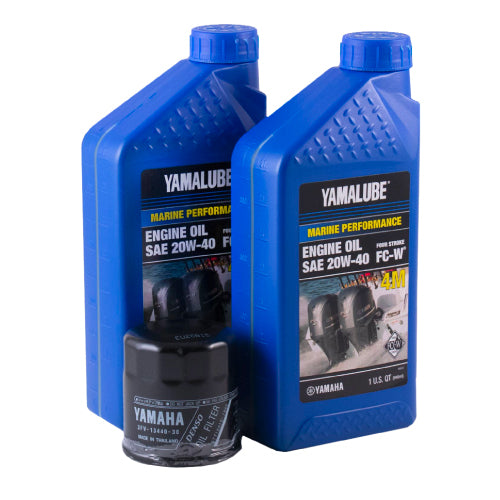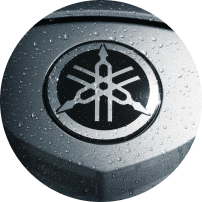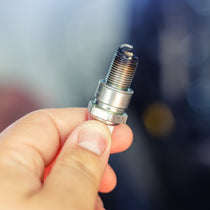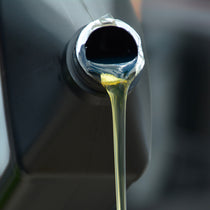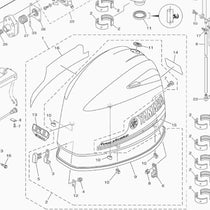

How to Perform a Yamaha Outboard Oil Change
Every boat owner understands the importance of maintaining the peak performance of their Yamaha outboard engine, whether navigating tranquil lakes or venturing into deeper waters. At the heart of this maintenance is the essential Yamaha outboard oil change. Much like any motorized machinery, the efficacy of an outboard engine significantly depends on its oil’s quality and condition.
This guide offers a detailed rundown of the necessary tools and supplies and a step-by-step process to ensure your Yamaha outboard receives the top-tier care it needs. In the video embedded within this article, the engine oil change was performed on a Yamaha F115 outboard. However, the video and the step-by-step instructions included within this article apply to:
- F115
- VF115
- F75
- VF90
- F90
What You’ll Need for the Job
You’ll Also Need:
- Oil pan or container
- Gloves
- Shop towels or rags
- Funnel
*Yamaha oil change kits include the oil weight and quantity, Yamaha oil filter, and drain bolt gaskets for your engine. Or, you can purchase these items separately.
Understanding the Importance of Regular Oil Changes
For many boat enthusiasts, the purr of a well-maintained engine is a comforting sound, an affirmation of smooth seas ahead. The engine oil is at the heart of this mechanical endurance, a crucial component often underestimated. Let’s delve into the importance of regular oil changes and why they are vital for your Yamaha outboard engine.
- Lubrication: At its core, engine oil serves as a lubricant. The numerous moving parts within an engine operate at high temperatures and can cause wear and tear if not adequately lubricated. Regular oil changes ensure these parts remain well-coated, reducing friction and preventing premature wear.
- Temperature Regulation: Fresh oil can effectively absorb and dissipate heat. Over time, as oil breaks down, it loses this ability, leading to potential overheating of engine components. Replacing old oil with new ensures that the engine remains cool during operation.
- Removing Sludge and Particles: Oil can accumulate contaminants over time and turn into sludge. This sludge can decrease engine efficiency and cause long-term damage. Regular oil changes help remove sludge, ensuring that only clean oil circulates within the engine.
- Protecting Internal Parts: Modern engine oils contain additives that protect the engine’s metal surfaces against corrosion. These additives break down with time, reducing the oil’s protective capabilities. Regular replacements ensure the engine remains shielded from corrosion.
- Fuel Efficiency: A well-lubricated engine operates more smoothly and efficiently. By ensuring regular oil changes, you can improve fuel efficiency, leading to fewer trips to the fuel dock and cost savings in the long run.
- Maximizing Engine Lifespan: Perhaps the most compelling reason for regular oil changes is extending your engine’s life. Ensuring that internal components are lubricated, cool, and clean allows you to set the stage for a longer-lasting, more reliable outboard engine.
While it might seem like a simple, often overlooked task, regular oil changes play a pivotal role in ensuring the health and longevity of your Yamaha outboard engine. Making it a part of your routine maintenance schedule will ensure your outings remain trouble-free and your engine serves you faithfully for years to come.

When is the Right Time for an Oil Change
Knowing when to change the oil in your Yamaha outboard engine is just as critical as understanding the importance of the procedure itself. Recognizing the optimal time ensures that your engine runs efficiently and lasts longer. Here’s a guide to help you pinpoint the ideal intervals for oil changes.
- Manufacturer’s Recommendation: Your Yamaha outboard’s owner manual should always be the primary reference point. Manufacturers provide specific guidelines based on extensive testing to ensure the longest lifespan for their engines.
- Usage Patterns: If you’re a frequent boater, taking your vessel out every weekend or using it daily for work, you’ll naturally need more frequent oil changes than someone who uses their boat once a month.
- Annual Maintenance: Regardless of the frequency of use, changing your engine oil at least once a year is essential. This yearly change helps to flush out contaminants and ensures the engine remains well-lubricated, especially if you have intervals of inactivity.
- Oil Color and Texture: Regularly check the engine oil’s color and consistency. Fresh oil typically has a clear amber color, while old oil turns dark brown or black and may feel gritty. If you notice a change in the oil’s appearance or feel, it’s time for a change.
- Engine Performance: If you start noticing your engine is not running as smoothly as before or is making unusual noises, it might indicate that the oil is old and not lubricating properly.
- Hours of Operation: Some boaters prefer to schedule oil changes based on engine running hours. If you keep track of this, an oil change every 50-100 hours of operation is a standard guideline, though this can vary based on the specific outboard model.
- Seasonal Changes: Changing the oil before storing it is a good practice if you don’t use your boat during certain seasons. Fresh oil ensures that no contaminants sit in the engine during periods of inactivity.
- Environmental Factors: If you boat in particularly gritty, dusty, or muddy environments, contaminants can affect the oil more quickly. Similarly, saltwater environments can be harsher on engines, which might necessitate more frequent oil changes.
In summary, while guidelines provide a good starting point, the right time to change your Yamaha outboard engine’s oil depends on various factors. Regularly inspect your engine, monitor its performance, and adjust your maintenance schedule based on your unique boating habits and environment. Keeping up with annual maintenance and being proactive in care will ensure your engine remains in peak condition for every journey.
How to Change Yamaha Outboard Oil: Step-by-Step Guide
To perform this job, you’ll need:
- Yamaha Oil Change Kit
- Yamalube Marine Performance Engine Oil
- Yamaha oil filter
- Oil filter wrench
- Oil pan or container
- Gloves
- Shop towels or rags
- Funnel
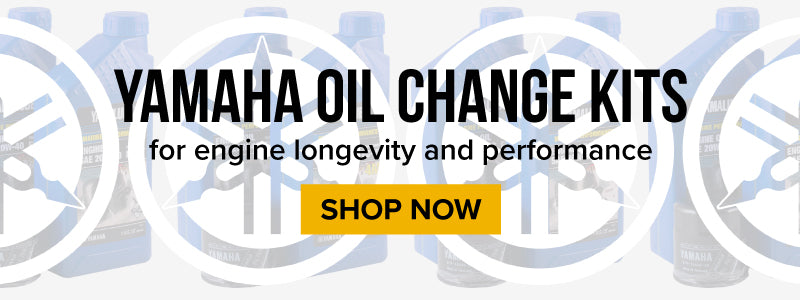
*Yamaha oil change kits include the oil weight and quantity, Yamaha oil filter, and drain bolt gaskets for your engine. Or you can purchase these items separately.
1. Preparation:
- Ensure your Yamaha outboard is on a level surface and in a location that can handle potential oil spills.
2. Syphon Out the Oil:
- Using the siphon pump, draw the old engine oil through the dipstick hole, transferring it to your oil pan or container. Ensure the siphon pump hose is not kinked to allow easy removal.
3. Locate and Remove the Drain Plug:
- Locate the oil drain plug and position the oil pan or container below the drain plug.
- Remove the drain plug and allow any remaining oil to drain into the pan.
6. Change the Oil Filter:
- While the oil is draining, locate the oil filter.
- Using the oil filter wrench, unscrew and remove the old filter.
- Before installing the new filter, apply a small amount of 2-4-C marine lubricant to the rubber gasket on the top of the filter.
- Screw in the new oil filter by hand until it’s snug. Don’t over-tighten.
7. Replace the Drain Plug:
- Before re-inserting the plugs, always replace the old drain and fill seals with new ones.
- Once all the oil has drained, replace and tighten the drain plug.
8. Refill with New Oil:
- Locate the oil fill cap on the top of the engine.
- Place a funnel into the fill hole and pour in the specified amount and type of Yamaha outboard engine oil.
11. Clean Up:
- Safely dispose of the used oil and filter. Many automotive stores or marinas offer recycling services for used oil.
- Wipe down any spilled oil and properly store all tools and supplies.

In Conclusion: Navigating Engine Care
Regular oil changes are the cornerstone of a well-maintained Yamaha outboard engine. By recognizing the indicators and maintaining a regular maintenance routine, you’re paving the way for numerous trouble-free voyages in the future.
Remember, timely care not only boosts engine performance but also safeguards against potential costly repairs. So, make oil changes an integral part of your boating routine and enjoy the peace of mind that comes with a well-maintained vessel.
**Important Note**
Always consult your engine’s owner’s manual for instructions and information specific to your engine. If you need clarification on performing an oil change, consult a Yamaha-certified mechanic.
PartsVu and Platinum Mobile Marine Partnership
Huge thanks go to Frank Cutri, the owner and operator of Platinum Mobile Marine, a mobile mechanic service serving the Lee County, Florida area, for partnering with PartsVu on the Boat Maintenance Matters series.
We are working hard to build a library of step-by-step instructions on common outboard motor repair and maintenance tasks. PartsVu is proud to offer all of the Yamaha outboard parts and products you need to maintain your engine for years.

